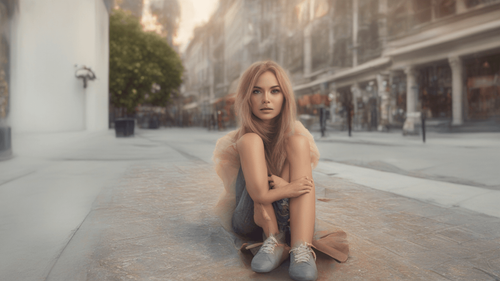
Introduction
In an era where technology is pushing the boundaries of creativity and reality, the concept of deepfake generator pictures has taken center stage. These tools allow us to blend reality and fiction, creating images that look genuine but are entirely fabricated. In this article, we'll delve into the fascinating realm of deepfake generator pictures, understanding their intricacies, applications, and potential impact.
Deepfake Generator Picture: Unveiling the Technology
Deepfake generator pictures utilize advanced machine learning algorithms to manipulate and generate visuals that appear real, even though they are entirely synthetic. This technology is a subset of the broader deepfake landscape, which primarily focuses on videos and audio. However, deepfake generator pictures deal exclusively with crafting images that can range from subtly altered to wildly fantastical.
How Does It Work?
The process begins with a dataset of real images, which serves as the foundation for the algorithm to understand facial features, expressions, and nuances. By analyzing these images, the algorithm learns to mimic the intricate details that make an image appear authentic. Subsequently, when given input, the generator produces an entirely new image that adheres to the learned patterns.
Applications of Deepfake Generator Pictures
Deepfake generator pictures have found diverse applications across various industries, capitalizing on their ability to create compelling yet fictional visuals.
Entertainment and Media
From movies to advertisements, deepfake generator pictures are revolutionizing the entertainment industry. Producers can seamlessly insert actors into historical scenes or generate fictional characters with striking realism, enhancing visual storytelling.
Art and Creativity
Artists are leveraging deepfake generator pictures as a canvas for their imagination. These tools enable the fusion of different art styles, periods, or even the portrayal of fictional worlds, pushing the boundaries of traditional art.
Fashion and Design
Fashion designers and marketers are using deepfake generator pictures to visualize clothing and accessories on virtual models, saving time and resources that would otherwise be spent on physical prototypes.
Research and Education
In academia, deepfake generator pictures are aiding in historical reconstructions, allowing students to visualize events in unprecedented ways. This technology also assists researchers in simulating experiments and scenarios for analysis.
Ethical Considerations
As with any groundbreaking technology, deepfake generator pictures raise ethical concerns that warrant careful consideration.
Misinformation and Deception
The potential for misuse is evident, as these images can be used to spread false information or deceive individuals. Distinguishing between authentic and generated visuals becomes increasingly challenging, exacerbating the issue of misinformation.
Privacy Concerns
The creation of lifelike images from minimal data raises privacy concerns. People's likenesses could be used without their consent, leading to infringement of personal boundaries.
Impacts on Reality Perception
Exposure to a barrage of fictional yet believable images might reshape how we perceive reality. This blending of the real and the unreal could challenge our ability to discern fact from fiction.
FAQs
How Accurate Are Deepfake Generator Pictures?
The accuracy of deepfake generator pictures varies based on factors such as the quality of the training data and the sophistication of the algorithm. In some cases, the results are incredibly convincing, while in others, certain inconsistencies might still be noticeable.
Are There Legitimate Uses for Deepfake Generator Pictures?
Absolutely. While concerns about misuse are valid, there are legitimate and innovative applications, such as entertainment, virtual modeling, and historical reconstruction.
Can Deepfake Generator Pictures Be Detected?
Detection methods are evolving alongside deepfake technology. Researchers are developing algorithms and tools to identify manipulated images, but the cat-and-mouse game between creators and detectors continues.
What Steps Are Being Taken to Address Misuse?
Tech companies, researchers, and policymakers are collaborating to develop guidelines, regulations, and technologies to detect and mitigate the negative impacts of deepfake generator pictures.
Are Deepfake Generator Pictures Illegal?
The legality of deepfake generator pictures varies by jurisdiction and intent. Using such technology for harmful purposes, like defamation or fraud, is likely to be illegal in many regions.
What Does the Future Hold for Deepfake Generator Pictures?
The future is a mix of promise and caution. While these tools offer unprecedented creative potential, it's crucial to strike a balance between innovation and responsible use.
Conclusion
The emergence of deepfake generator pictures represents a significant milestone in the realm of digital artistry and visual manipulation. As we continue to navigate the ethical landscape and harness the potential of this technology, one thing remains certain: our perception of reality is evolving, and it's up to us to ensure that creativity and responsibility go hand in hand in this brave new world of visuals.